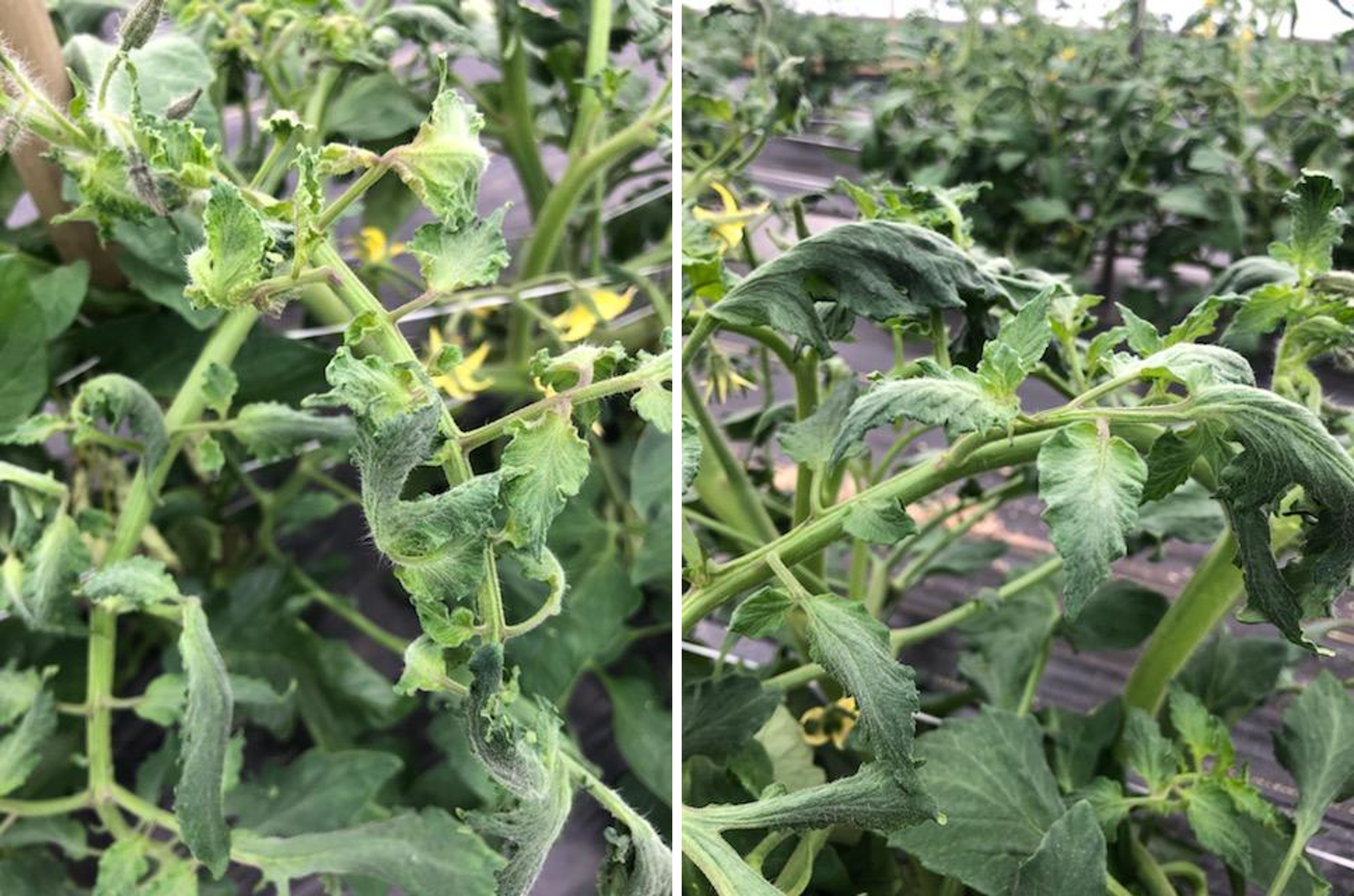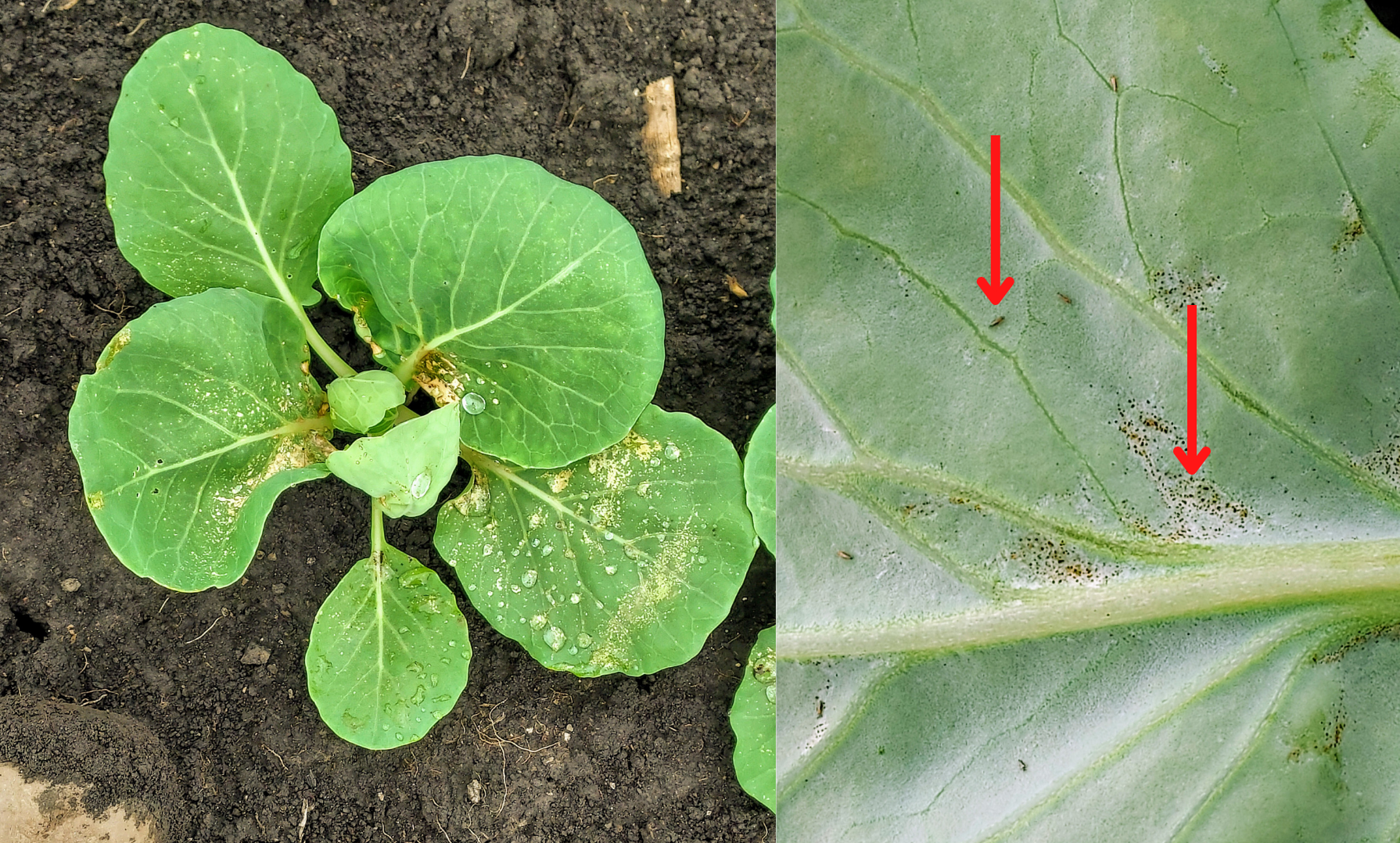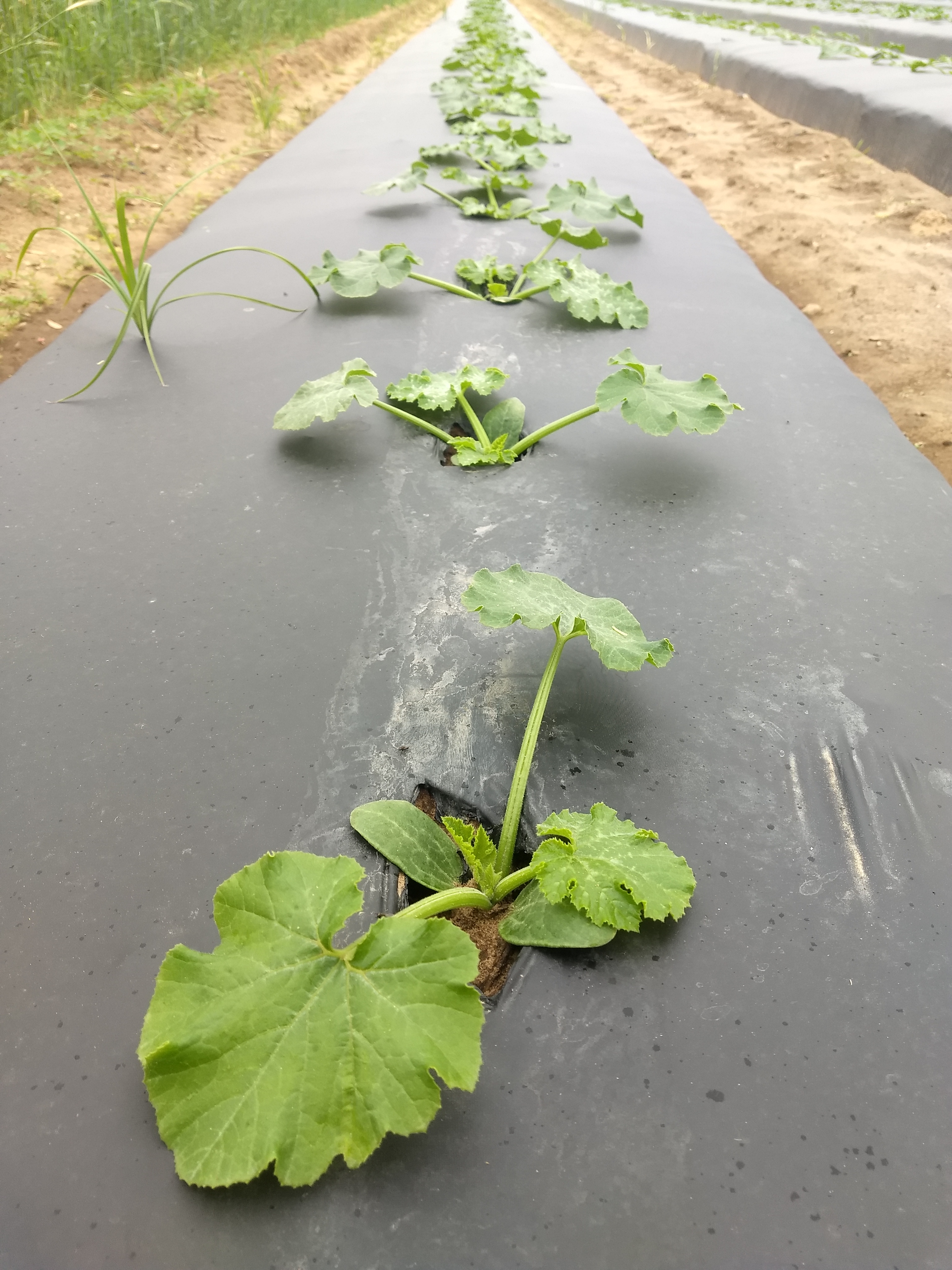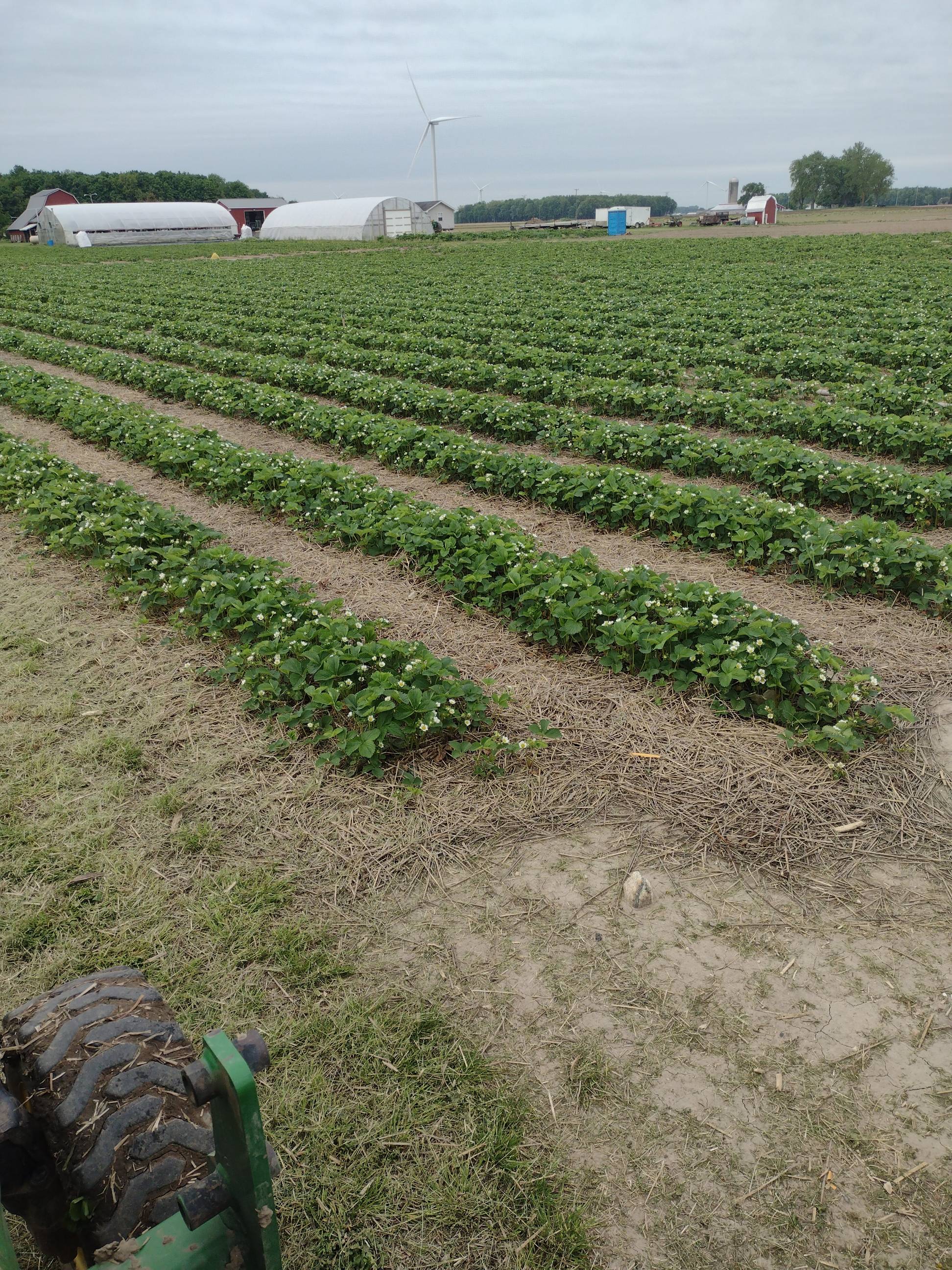Michigan vegetable crop report - June 1, 2022
Insects are beginning to catch up to plantings

Weather
Watch Jeff Andresen’s weather update here.
Last week started with cooler than normal weather but ended with a shot of summer. Mean temps were up to 4-5 degrees Fahrenheit above normal in parts of the lower peninsula, with the western Upper Peninsula cooler than normal. Most of the state received 0.5-1 inch of rain. Degree day accumulations are several days to a week ahead of normal for much of the lower peninsula, while the western U.P. is cooler. Potential evapotranspiration rates were unusually high over the last week, creating conditions for rapid drying of soil surfaces.
The forecast calls for:
- Variably cloudy and cooler weather Wednesday. Scattered showers possible through Thursday morning.
- Mostly sunny and cool Friday and Saturday.
- Rain possible again overnight Saturday and Sunday into early next week.
- Precipitation is forecast to total 0.25-1 inch or more, with the higher totals to the south
- High temperatures in the 60s/70s Wednesday through Saturday. Lows generally in the 40s/50s except for Friday morning with upper 30s possible north.
- Medium range guidance calls for cooler and wetter than normal weather during much of the first half of June.
Help is here: Get plugged into the new Enviroweather
Do you need help with setting up an account and dashboard on Enviroweather’s new website? You can send an email to eweather@msu.edu with the weather stations, crops and models that you are interested in, and we’ll set it up.
Field Progress
Cereal rye was flowering this week in SW Michigan, and drainage was being dug across beds of plastic. In field plantings, trenchers can be pulled across rows, but with plastic beds it’s all handwork to maintain the drip tape.

Herbicide Damage
A grower experienced herbicide injury this week in unheated hoophouse tomatoes and shared the following photos. We were able to rule out ethylene injury from cold/wet soils, poor combustion in heaters (no heat), and self-applied products that could cause this. Yet, a prominent chemical smell was in the air.
The symptoms are similar to damage caused by growth regulator auxin-mimics like 2,4-D and dicamba, which are commonly used pre-emergence and burn-down mixes applied to large-acre field crops. Those products are also well-known for their characteristic off-target effects on sensitive neighboring plants. Recovery can be aided by paying extra attention to irrigation, fertility, and pest management. But, they will not likely fully recover, existing flowers will drop, fruit may abort, and some plants may never recover.

Crop updates
Asparagus
After a slowdown pickings ramped up again in West Central over the weekend, making late nights for growers with twice-a-day pickings. Carbaryl and acetamiprid (e.g., Assail) can be used if asparagus beetles have flared up.
Market growers may not always be plugged into weed control programs. If you are newer to asparagus, and able to use herbicides, check out this article.
Carrots and celery
Growers with a history of swede midge need to continue looking for the characteristic twisting leaves and brown scarring in the crotches of leaves and stems on older plantings and either spraying ahead of it or using low tunnels on any newer plantings adjacent to symptomatic plantings. Several photos of damage can be found in this article. A fast-maturing kohlrabi is also an excellent indicator crop because the scarred surfaces expand as the stem swells and are easy to see.
Imported cabbage worms were munching on cole crops in some locations. Bt is an effective insecticide that controls caterpillars when they are small, while conserving beneficials that contribute to control of pests like aphids and diamondback moths.
Onion thrips were present in one location last week in relatively high numbers. Onion thrips cause cosmetic damage to cabbage, rasping the leaves as the head forms. Cupping-which happens just before heads start to form-is a critical time for control. At cupping internal leaves start to be concealed by outer leaves, making thrips harder to contact with insecticide. Conventional growers can use Movento, Radiant, Assail, Lannate or Exirel to help control thrips. Of these products, Radiant, Lannate and Exirel also provide varying degrees of caterpillar control. Check out an oldie but goodie Expo session summary for more details here.

Peak activity of overwintered cabbage maggot flies should be over, based on degree days at the Grant, Hudsonville, Fennville and Allegan EnviroWeather stations. Flies will still be active between peaks. For example, some earlybird maggots likely pupated and are emerging as flies now, even though the bulk of this second flush is yet to come. And some flies from the overwintered generation may be lingering. For example, flies had already emerged from some pupae that rode around in a MSU Extension vehicle since last week, and growers are still seeing egglaying.
Michigan State University Extension is working with kind, cooperating growers this year to help with this tough transitional year as chlorpyrifos is no longer available. Please do not be afraid to reach out!
Cucurbits/Pickles
Squash and slicing cucumbers being continually seeded and transplanted now. In SW Michigan, earliest squash plantings had up to five true leaves. Pickling cucumber seeding for contracts kicked off this week across the state.
Striped cucumber beetles were reported feeding on volunteer gourds and transplanted pumpkins this week. Research out of Purdue has shown that systemic neonicotinoid (IRAC 4) seed treatments are most effective for about 3 weeks on direct-seeded crops. On plug plants 4 to 5 weeks old, the amount of insecticide left in the plant is not high enough to provide much control once transplanted. In either case, there is still residue left in the pollen at levels high enough to have sublethal effects on pollinators. So, if you transplant with plugs using treated seed, there is little benefit to these seed treatments to outweigh the negative effects on bees. Foliar sprays offer more and safer options for products and timings, with good efficacy on beetles. Carbaryl (Sevin), pyrethroids (Asana, Warrior, Mustang Maxx, etc.), and the newer chlorantraniliprole (Coragen) work well on contact with beetles and can be applied in the evening. Coragen has systemic properties, but is safer on bees. Acetamiprid (Assail) is a foliar-applied neonicotinoid that appears to be safer on bees as well when applied in the evening to avoid direct contact.

Despite their name, seedcorn maggot flies are also pests of peas, beans, and all direct-seeded squash. Once 1234 degree days (base 50 F) accumulate after March 1, the first generation are predicted to reach their peak flight and egg-laying. For much of the southern tier counties, this will be reached within the next 7 to 10 days. They are a larger problem in crops grown from untreated seed. Problems lessen once soil temps at 4 inches consistently reach 70 F each day. Learn more here.
The monitoring system for downy mildew spores is up and running. The Hausbeck lab uses a twofold, rigorous approach to confirm the presence (or absence) of downy mildew spores: they test for cucurbit downy mildew DNA and confirm the presence of sporangia via microscopy. You can be confident in their results. Keep tabs on this early warning system here: https://veggies.msu.edu/downy-mildew-news/.
Onions
With onion topdress fertilizer applications approaching, consider getting a pre-sidedress soil nitrate test (PSNT) on muck fields. A PSNT can provide a good indication of soil nitrogen (N) availability to identify fields where topdress N can be reduced or even eliminated without impacting yield. In some muck fields and years, significant N supply from organic matter mineralization and preplant N applications may be sufficient to meet crop demand. Given record high fertilizer prices, this season could be a good one to give PSNT a try.
Recent research by Dr. Zack Hayden along with previous work by Dr. Darryl Warncke in commercial onion fields in Michigan have shown PSNT values can be used to avoid overapplication of topdress N. Complementary work from Cornell University in New York has also shown the potential to reduce topdress N rates on many muck fields, in addition to demonstrating that excessive N rates can be a risk factor for bacterial disease.
How does it work? The PSNT test for muck soils basically involves collecting a representative soil sample from a consistent depth and submitting it to the MSU Soil and Plant Nutrient Laboratory (SPNL) for analysis of nitrate-N (NO3 -) content. Turnaround times are typically under a week. For a few dollars more, consider also analyzing ammonium-N (NH4 +). While the ammonium form of N is typically low on mineral soils due to rapid conversion to nitrate, muck soils often maintain higher levels of this form of plant-available N, which can justify including it in overall estimates of N availability.
An important point is that muck soils can vary widely in their bulk density (the weight of soil in a given volume) due to high variability in organic matter content. Calculating N credits from PSNT values is therefore more soil-specific than for mineral soils. The MSU SPNL in particular can estimate bulk density from your soil sample and calculate adjusted recommendations for topdress N rates for muck vegetables, while this service is not commonly available from other commercial soil testing labs.
However, as a conservative ballpark threshold for topdress applications, current research suggests that muck onion fields with PSNT values greater than 60 ppm in the top 12 inches may be unlikely to exhibit an economic response to additional N fertilizer. While more research is needed to confirm this estimate across soils and years, muck onion fields exceeding this threshold prior to side-dress would be good candidates for reduced N fertilizer rates.
Fruiting vegetables
Field-transplanted pepper roots are leaving the root ball and first copper sprays have been applied on some farms. More field plantings of tomatoes, peppers, and eggplants are underway this week across the state. Many growers are using white-on-black plastic laid now, when good moisture conditions exist, but planted later. One grower reported a modest yield reduction compared to black plastic, but is much happier with the higher transplant survival once the season gets consistently sunnier and warmer.

Peas/Beans
Hoophouse peas were being harvested this week. Seedcorn maggot is a pest to lookout for in new field seedings at this time (see Cucurbits above).
Potatoes
Dr. Szendrei’s lab sighted Colorado Potato Beetles in Montcalm County for the first time, so keep an eye out for this pest in potatoes, eggplant and tomatoes in the coming weeks.
Sweet corn
Along with seedcorn maggot (see Cucurbits above), European Corn Borer degree day models predicted emergence of the overwintered generation between May 28 and May 30. First generation corn borer is typically of less concern, but it can do some whorl feeding. It is helpful to note though, as it signals you have a local population to watch for later in the season.
Strawberries
Strawberry bloom continues. Red fruit are beginning to be seen, and harvest might begin soon in southern tier counties. All the leaves are out by now: maintain fungicide coverage to protect the leaves and help prevent botrytis as fruit begin to show. With fruit beginning to form, western flower thrips populations should be monitored and appropriate insecticides used as needed.

Events
-
June 1, 7-8 a.m. - Michigan Beekeeping June Office Hours
-
June 2, 7-9 a.m. - Field Crops Virtual Breakfast: Hot topic Q&A session (RUPS available)
-
June 8, 12-1 p.m. - MSU Hop-Chat bi-weekly webinar
-
June 8, 1:30-2:30 p.m. - MSU Chestnut Chat bi-weekly webinar
This work is supported by the Crop Protection and Pest Management Program [grant no 2021-70006-35450] from the USDA National Institute of Food and Agriculture.



 Print
Print Email
Email

